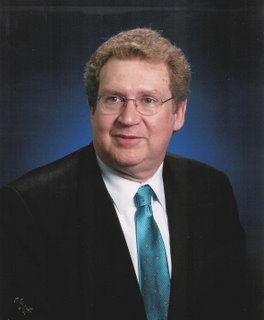The Trinity
How does one reconcile the "One God" of the Old Testament with the three "Persons" of the New Testament Trinity? The Sh'ma of Deuteronomy 6:4-5 clearly emphasizes the singularity of God, which is also reconfirmed in the Ten Commandments (Exodus 20:3). Yet the New Testament clearly proclaims a three-person Godhead (Matthew 28:19, 2 Corinthians 13:14, John 14-17, etc.). How does one deal with the ostensible tensions between the Old and New Testament revelations of the ultimate mystery of the Godhead?The doctrine of the trinity has been at the heart of much theological controversy. The routine objection is that the doctrine sacrifices monotheism to tritheism. But this objection thrives on misconceptions of divine personality in the image of disparate, individual, human selves. Rationalistic apologetics, promotive of trinitarianism on speculative rather than revelational grounds, regrettably encourages these misunderstandings.
Many of us also resort to convenient models to skirt these problems, and these, too, mislead rather than clarify. Favorites include three tones blending into one chord; a single ray of light of three primary colors; or water in the forms of ice, liquid, or steam. But each of these are, at best, clumsy illustrations, inadequate to communicate aspects of an infinite God to our finite mind.
How should we deal with this challenging issue? By confining ourselves to what God, in His sovereignty, has revealed to us of Himself in His Word.
The Trinity in the Old Testament
There is no absurdity involved when it is contended that plurality can (and does) coexist with unity (i.e., as in Genesis 2:24 when Adam and Eve become "one flesh"). We discover that, from the first verse of Genesis, Elohim is a plural noun used with singular verbs. This plurality even shows up in our English translations in Genesis 1:26, 3:22, and 11: 7. If we examine the text in Ecclesiastes 12:1, we note that the source text is also in the plural:
Many of us also resort to convenient models to skirt these problems, and these, too, mislead rather than clarify. Favorites include three tones blending into one chord; a single ray of light of three primary colors; or water in the forms of ice, liquid, or steam. But each of these are, at best, clumsy illustrations, inadequate to communicate aspects of an infinite God to our finite mind.
How should we deal with this challenging issue? By confining ourselves to what God, in His sovereignty, has revealed to us of Himself in His Word.
The Trinity in the Old Testament
There is no absurdity involved when it is contended that plurality can (and does) coexist with unity (i.e., as in Genesis 2:24 when Adam and Eve become "one flesh"). We discover that, from the first verse of Genesis, Elohim is a plural noun used with singular verbs. This plurality even shows up in our English translations in Genesis 1:26, 3:22, and 11: 7. If we examine the text in Ecclesiastes 12:1, we note that the source text is also in the plural:
Remember now thy Creator(s) in the days of thy youth, while the evil days come not, nor the years draw nigh, when thou shalt say, I have no pleasure in them;
Also, Isaiah 54:5:
For thy Maker(s) [is] thine husband; the Lord of hosts [is] his name; and thy Redeemer the Holy One of Israel; The God of the whole earth shall he be called.
Many other examples exist throughout the Old Testament texts. Isaiah's vision of the throne of God in Isaiah 6 and Jacob's blessing in Genesis 48 contain allusions to the Trinity. Careful study of Psalm 2 will even reveal a trialogue among the three persons of the Trinity: the Father, the Son and the Holy Spirit. It is amazing how many presumed difficulties begin to disappear when one discovers the integrity of the Bible: although composed of 66 books penned by 40 authors over thousands of years, it demonstrates integrity of design - every detail, every place name, the subtleties of the text - all testify to its singular authorship. The New Testament is in the Old Testament concealed; The Old Testament is in the New Testament revealed.
Also, Isaiah 54:5:
For thy Maker(s) [is] thine husband; the Lord of hosts [is] his name; and thy Redeemer the Holy One of Israel; The God of the whole earth shall he be called.
Many other examples exist throughout the Old Testament texts. Isaiah's vision of the throne of God in Isaiah 6 and Jacob's blessing in Genesis 48 contain allusions to the Trinity. Careful study of Psalm 2 will even reveal a trialogue among the three persons of the Trinity: the Father, the Son and the Holy Spirit. It is amazing how many presumed difficulties begin to disappear when one discovers the integrity of the Bible: although composed of 66 books penned by 40 authors over thousands of years, it demonstrates integrity of design - every detail, every place name, the subtleties of the text - all testify to its singular authorship. The New Testament is in the Old Testament concealed; The Old Testament is in the New Testament revealed.


0 Comments:
Post a Comment
<< Home